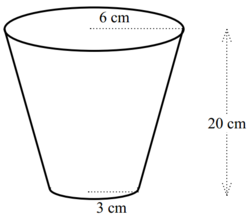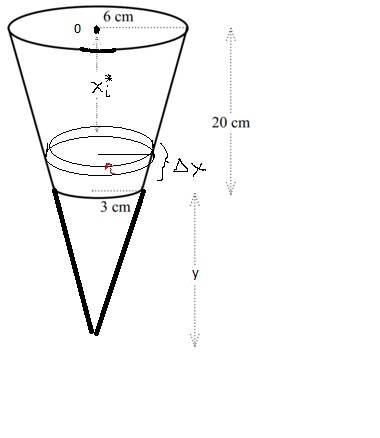Science:Math Exam Resources/Courses/MATH101/April 2007/Question 05
{{#incat:MER QGQ flag|{{#incat:MER QGH flag|{{#incat:MER QGS flag|}}}}}}
• Q1 (a) • Q1 (b) • Q1 (c) • Q1 (d) • Q1 (e) • Q1 (f) • Q1 (g) • Q1 (h) • Q1 (i) • Q1 (j) • Q1 (k) • Q2 (a) • Q2 (b) • Q2 (c) • Q2 (d) • Q3 (a) • Q3 (b) • Q3 (c) • Q3 (d) • Q4 (a) • Q4 (b) • Q5 • Q6 (a) • Q6 (b) •
|
Make sure you understand the problem fully: What is the question asking you to do? Are there specific conditions or constraints that you should take note of? How will you know if your answer is correct from your work only? Can you rephrase the question in your own words in a way that makes sense to you? |
|
If you are stuck, check the hints below. Read the first one and consider it for a while. Does it give you a new idea on how to approach the problem? If so, try it! If after a while you are still stuck, go for the next hint. |
Hint 1 |
|---|
|
Place a coordinate system on your picture with the top being 0. Then choose a sample point . The best next step is to extend the picture to a cone and relate the sample point to the radius at that point via similar triangles. |
Hint 2 |
|---|
|
The following formulas will probably be useful Volume of a cylinder = pi x radius2 x height Mass = volume x density Force = acceleration x mass = gravity x mass = 9.8 x mass Work = force x displacement |
|
Checking a solution serves two purposes: helping you if, after having used all the hints, you still are stuck on the problem; or if you have solved the problem and would like to check your work.
|
Solution |
|---|
|
Our first step will be to extend the cup to look like a cone and label everything as shown in the diagram. Now, we can compute the value of y quickly via similar triangles (the big triangle and the one with side length 3), and this gives y = 20cm. However, notice in the question that there are several different units everywhere and so for consistency we should use a single unit (metres). As shown, let be a sample point between 0 and 0.2 (0 to 20cm), measured from the top of the cup. Then, at this point, the radius, labeled as is and isolating gives Now, using the volume of a cylinder formula, we have Using the mass formula with as density, we have Using the force formula, we have and finally, using the work formula, we can compute that the work done at the sample point is where we added 0.1m (10cm) to the distance d above since we are using a straw that is 10 cm above the cup. Hence, summing all these pieces gives completing the question (we do not need to evaluate this integral). |
{{#incat:MER CT flag||
}}
















